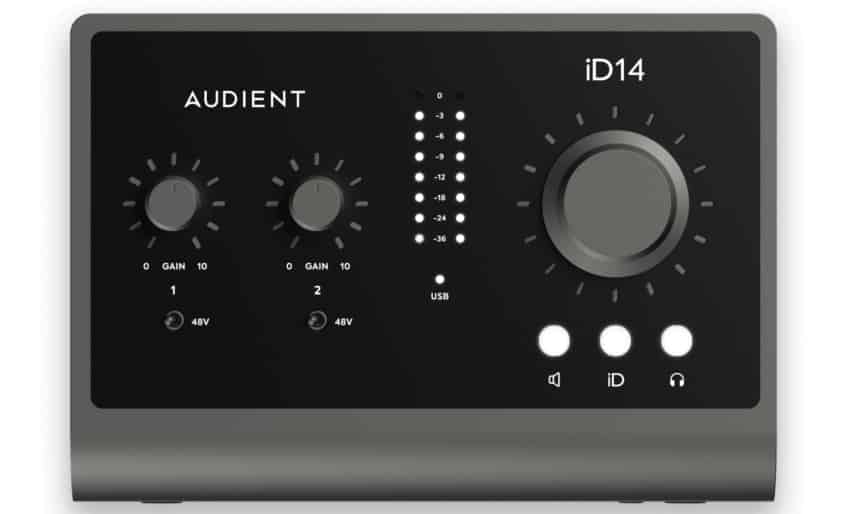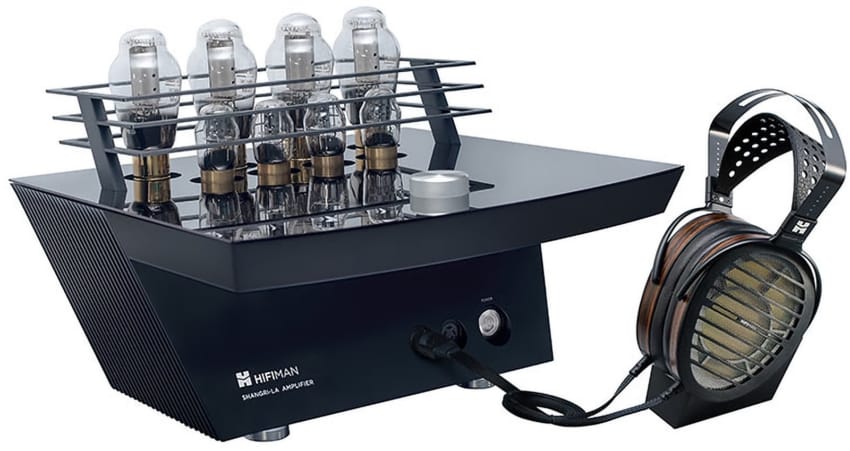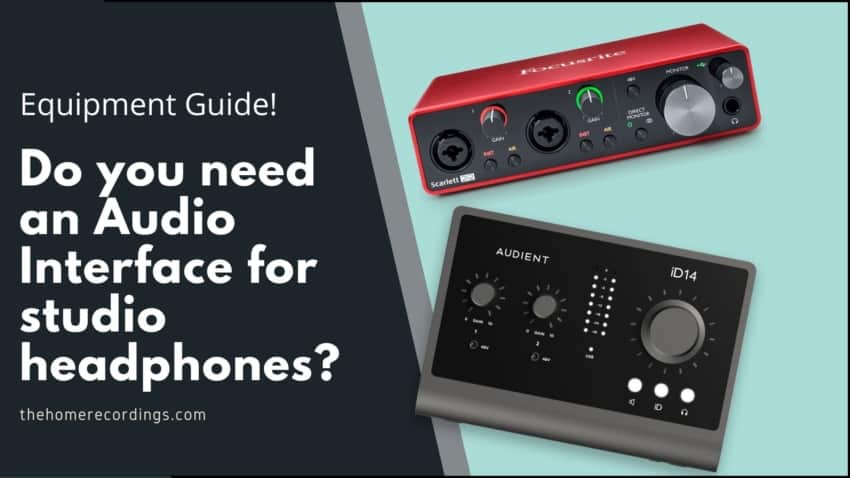Last updated on December 31st, 2023 at 06:04 pm
So, you just got your brand-new set of studio-grade headphones and are excited to listen to your favorite music on them, only to find that as soon as you hook them up to your phone or PC you can’t seem to get the volume you want and the audio quality isn’t all there.
Well, this happens because studio headphones usually require more power than a computer or a phone can provide.
Luckily, audio interfaces and headphone DAC/Amps can solve this issue!
In short, do you need an Audio Interface when using studio headphones? To get the most out of your studio headphones you’ll either need an audio interface or a dedicated headphone amp since your system’s sound may introduce unwanted noise, and it also won’t be able to drive the headphones as loudly nor with the same audio quality.
All of this, however, depends on the set of headphones you decide to buy as well as how much of an audiophile you are, or if you’re a music producer who needs to be able to hear every single detail.
Let’s take a look at this in more detail.
Do you need an Audio Interface for studio headphones?

Studio headphones generally require more power than small commercial ones to be able to reproduce music at a good level and with high audio quality, and this is where audio interfaces as well as headphone amps generally come in.
High impedance headphones, such as the Sennheiser HD650, require a lot of power to be driven properly, and both your Phone or your PC’s sound card won’t be able to deliver this power to them to make them sound loud and clear.
It’s worth noting, however, that you may get respectable “listening” levels if you go that route depending on the set of headphones you have, but why get high-end headphones when you’re not going to be able to drive them properly?
Generally speaking, if you bought- or are thinking about buying studio headphones, then consider investing in either an Audio Interface or a Headphone DAC/Amp as well, depending on your needs (only listening to music or also producing).
So, let’s see which one you should go with!
What is an Audio Interface?

An audio interface is a device that connects you your computer, generally via USB, and converts the analog signal from your recording equipment into a digital signal that can be recorded by the computer and vice versa, to be then reproduced by the headphones or monitors.
Audio interfaces come in all shapes and sizes and offer a multitude of features, some more and some less, which allows you to get the exact one that suits your needs best, such as more input and output options, MIDI I/O, S/PDIF, etc.
Since audio interfaces are designed for music production, they are also quite capable of driving most studio headphones out there, although the really affordable interfaces, such as the Behringer UM2, may not be able to since they are aimed at absolute beginners and the components aren’t all that great.
However, relatively affordable interfaces, such as the Audient iD14 or the Scarlett 2i2, feature great analog-to-digital and digital-to-analog conversion as well as great headphone amps.
This means that not only can they provide enough power for the headphones, but their high-quality converters also make it so that the signal is as clean as possible.
Here’s an article I wrote about the best audio interfaces under $200 which should serve you as a guide on which one to get for your headphones (I’d recommend the Audient or Focusrite interfaces).
What is a DAC/Amp combo?

A DAC is a Digital to Analog Converter, which means that it converts the digital audio coming from your PC/phone and converts it into an analog one that can be reproduced by the headphones, and then it also features an amp that simply increases the level of the audio signal to make it louder.
Essentially, it works just like an audio interface but only one way (from the computer/phone to the headphones) and it can’t be used to record music and is just for listening.
You can find DAC/Amp combos on the cheap side, around the $30-$40 mark, but there are also high-end ones that sell for over $50.000… not $5000, $50.000 (the HifiMan Shangri-LA).

Most DAC/Amp combos that are around the $100 mark are more than enough to properly drive any high-impedance set of headphones with great audio quality, and for most people, spending more than that doesn’t make a lot of sense.
Headphone DAC/Amp recommendations:
- FiiO E10K (Affordable and generally the best option)
- Grace design m900 (Better quality but $600+)
- RME ADI-2 (Premium DAC/Amp)
Which one is better?
This isn’t really a question of whether one is better than the other, but rather depends on your needs since someone only interested in listening to music won’t need the same equipment as someone who is thinking about producing it as well.
For Music Producers/Artists
Audio Interface, hands down!
Audio Interfaces allow you to record music, DAC/Amp combos don’t, and if you want to be able to record music at some point, then an Audio Interface is a must.
Additionally, the headphone amp inside of most audio interfaces is absolutely fantastic and there’s generally no need to get a separate headphone Amp or DAC/Amp combo.
For just listening and Audiophiles
If you’re not thinking about recording ever, then a DAC/Amp combo might be the ideal solution for you since they tend to be a bit more affordable than high-quality audio interfaces and may also reproduce the music a bit more accurately for less money.
Conclusion
I generally recommend most people to go with an audio interface since it’s simply more versatile, plus you can get something like a Scarlett Solo for well under $120 and it’s definitely capable of driving most high-quality studio headphones properly.
Just don’t go without either of them if you already spent close to $200, or more, on studio headphones since not providing them with enough power or a quality signal will make the purchase pointless.
I hope this information was useful!
Have a great day!
